Sketching Winter Landscapes
It’s the time year when the days are short, the weather is cold and often wet, and it’s tempting to sit inside with a cup of tea instead of braving the elements with a sketchbook. But in spite of the challenges, I think there’s so much value and fun in sketching winter plein air, and it can lead to wonderful inspiration inside a cozy studio. Outside you can sketch expressively and build your palette of place, a vocabulary of colors, the climate, and your experiences. Here’s a handful of tips and techniques for making the most of your time outdoors, whether you have just five minutes or all day!

Prepare for the weather
Heading out in wintry weather can take a little extra preparation. As sketching is a fairly stationary sport, I always bundle up extra with scarves and jackets. If it’s raining, an umbrella is helpful, too. I wear lightweight gloves when I sketch, sometimes using a fingerless pair to give me more dexterity. Even on overcast days, I wear sunscreen, a visor, or bandanna to protect my skin against the wind and UV. I always carry something warm to sit on as well, such as a stool or insulative pad.
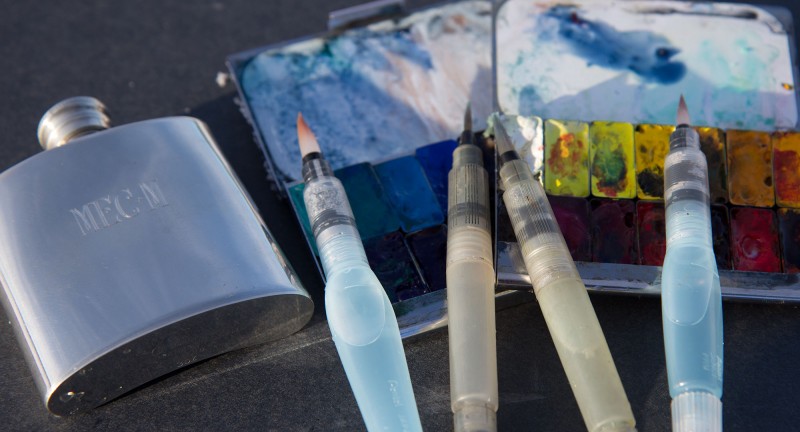
Pack portable materials
I typically work rapidly and on a small scale outside to gather as much inspiration from the environment as possible, that I might develop later into studio paintings. I’ll carry my Art Toolkits, sketching either in a small Moleskine notebook or using a variety of paper in my sketch binder. I prefer lightweight paper that will dry faster than my standard studio paper (Arches 140lb cold press), such as cream toned Canson Mi-Tientes and Arches Cover, and white Lenox 100 print-making paper. I also like to slip a Field Notes pocketbook into my Toolkit, their “expedition” series is made of super durable waterproof paper that I write on with a Sharpie pen. The orange color is also hard to lose! Other than that, I carry my usual selection of pencils, pens, and brushes (see what’s inside my current Pocket Art Toolkit), with the addition of my flask filled with vodka or gin if temperatures dip below freezing. The alcohol helps keep my paint brushes from turning into popsicles.
Create quick sketches
Facing my first blank page, I often start with notes and color explorations, not worrying about composition. See how color explorations develop into limited palettes for my studio.
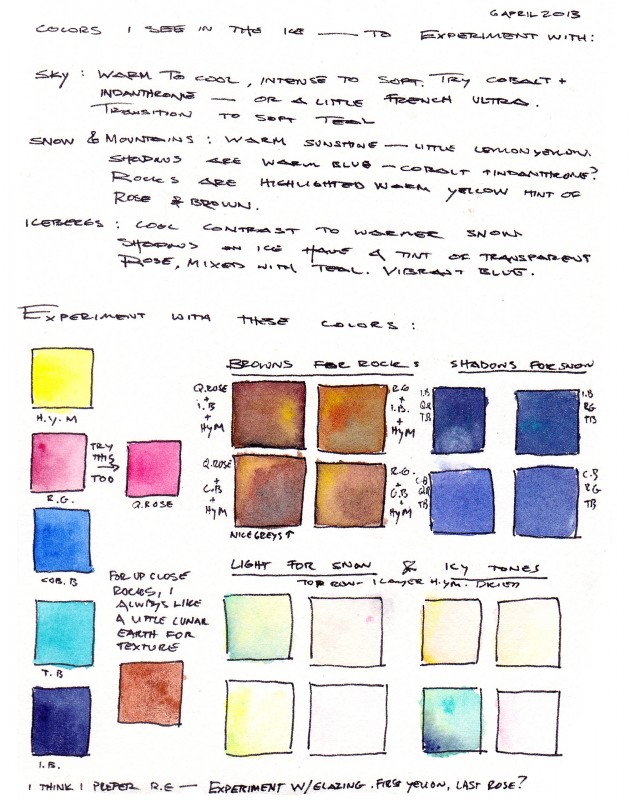
When time is limited or conditions are particularly challenging, I love making quick, small, gesture sketches. These rapid drawings focus on the energy and big idea of my subject. When making gestures, it’s helpful to think of your pen or pencil as a conductor’s baton dancing lightly on your page.
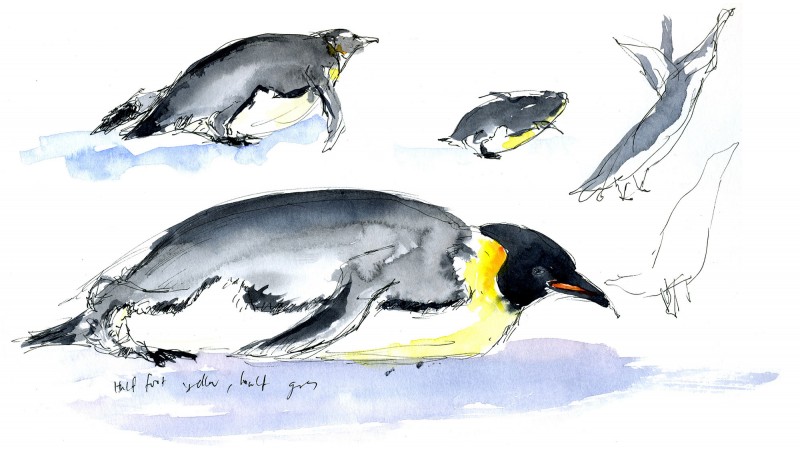
Doing a series of them can help you understand movement and form, and adding notes can help you remember additional details. See more gesture sketch inspiration.
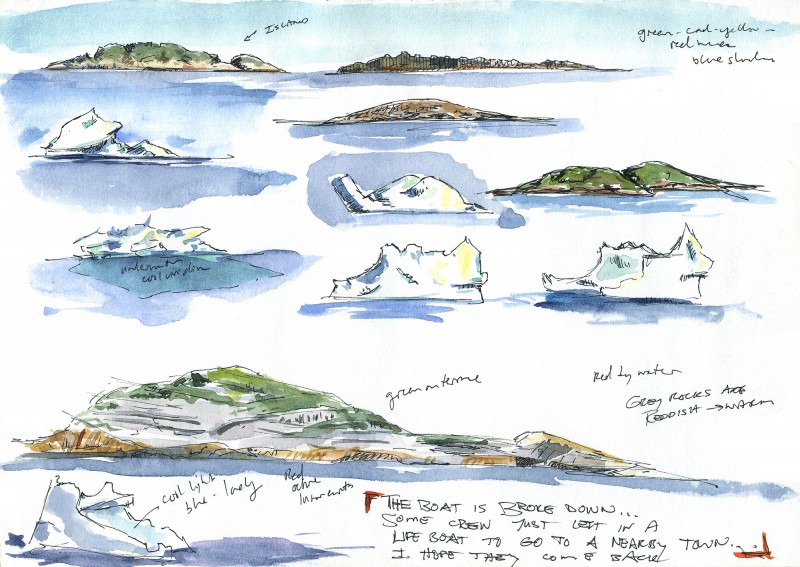
Small thumbnail sketches are fun, especially if time is limited. These sketches may just be a few inches across, and focus on the biggest shapes and colors–it helps to squint! I prefer pen, but sometimes have to resort to using pencil in the extreme cold. See more thumbnail inspiration.
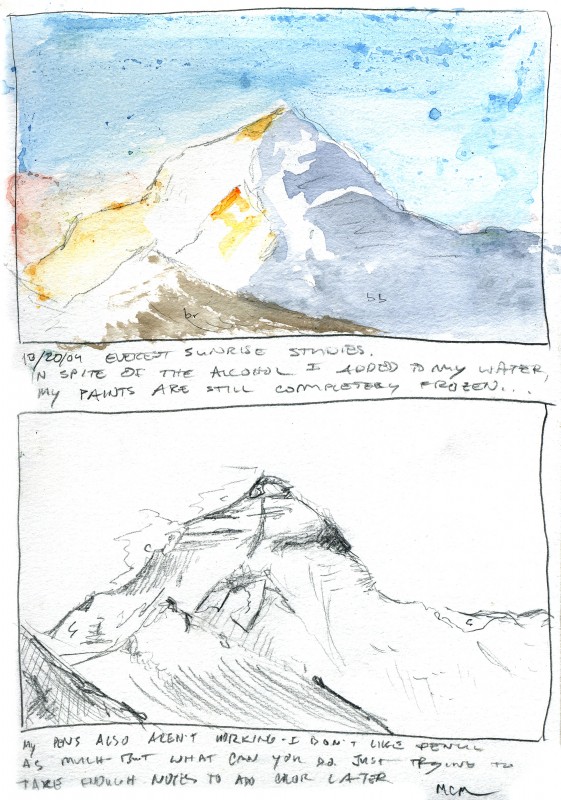
When I have time, I love diving into larger sketches where I can express the energy and spontaneity I feel outside. Everything I learn and observe helps me remember my experiences more vividly and intimately informs my studio process. See an example of how I develop a field sketch into a studio painting.

Finally, I take photos for additional inspiration. You can learn more about how I use them in this post on approaching studio paintings, and I invite you to explore my other technique blog posts to learn more!
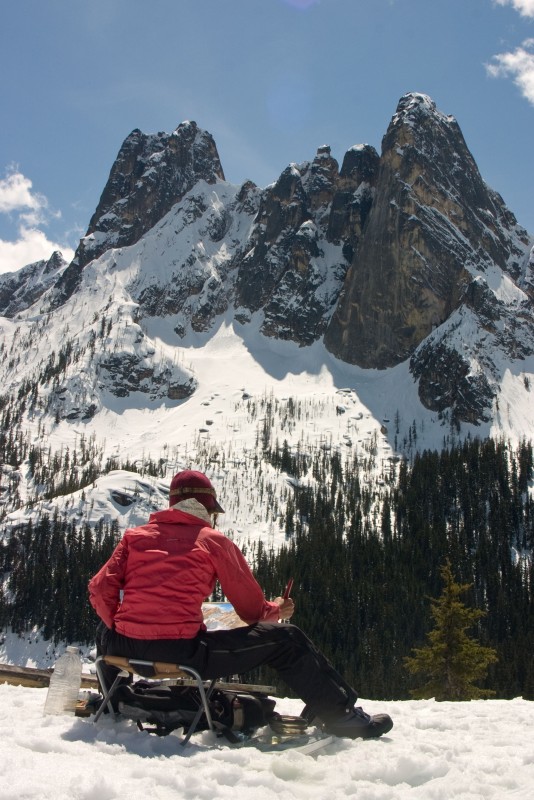
Happy winter and happy sketching!
8 Responses to “Sketching Winter Landscapes”
Mary Lou Peters
This is wonderful information–you are a hearty soul!
Leslie Rich
Thanks for this informative post. It’s inspiring.
Lois
You are so brave and focused with your desire to paint in the freezing weather. Your paintings results did turn out lovely and an interesting journal of the day.
Thanks for sharing.
Carol Whittaker
So cold! You show that nothing is impossible! I have MS and can’t tolerate the cold……..It is a great alternative to see your sketches!
(staying warm inside!)
Carol 💓
Maria
Thank you! One of these days I may need a tropical project… it would certainly be easier on the fingers!
Chris Soper
Very informative and inspirational. How do you use the alcohol w paintbrushes?
Maria
I typically dilute the alcohol (typically vodka or gin) 50/50 with water in my brush. Experiment and see what works for you!
Vicki Granade
No website, but great friend Ann Thompson (Port Townsend) shared Toolkit with me. Great tips and I see you keep several portable palettes (color, dark/light, cool/warm), and watercolor brushes /pens. I live in Flagstaff and it’s been an amazing snowy winter. You are a Good sketcher and generous, thank you. Vicki Granade